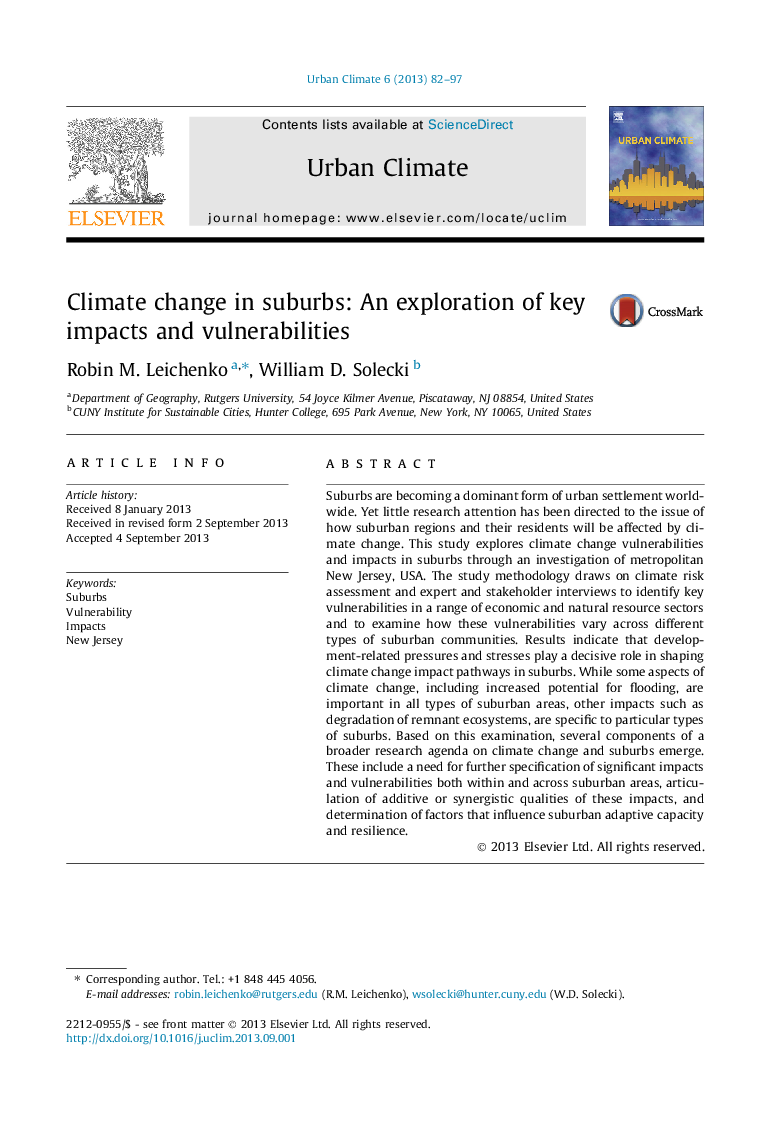| Article ID | Journal | Published Year | Pages | File Type |
|---|---|---|---|---|
| 143798 | Urban Climate | 2013 | 16 Pages |
•Suburbs are becoming a dominant form of urban settlement worldwide.•Climate change impacts and vulnerabilities vary among different types of suburbs.•Development-related pressures shape impacts and vulnerabilities in suburbs.•Further study of suburban impact pathways, adaptation, and resilience is needed.
Suburbs are becoming a dominant form of urban settlement worldwide. Yet little research attention has been directed to the issue of how suburban regions and their residents will be affected by climate change. This study explores climate change vulnerabilities and impacts in suburbs through an investigation of metropolitan New Jersey, USA. The study methodology draws on climate risk assessment and expert and stakeholder interviews to identify key vulnerabilities in a range of economic and natural resource sectors and to examine how these vulnerabilities vary across different types of suburban communities. Results indicate that development-related pressures and stresses play a decisive role in shaping climate change impact pathways in suburbs. While some aspects of climate change, including increased potential for flooding, are important in all types of suburban areas, other impacts such as degradation of remnant ecosystems, are specific to particular types of suburbs. Based on this examination, several components of a broader research agenda on climate change and suburbs emerge. These include a need for further specification of significant impacts and vulnerabilities both within and across suburban areas, articulation of additive or synergistic qualities of these impacts, and determination of factors that influence suburban adaptive capacity and resilience.
